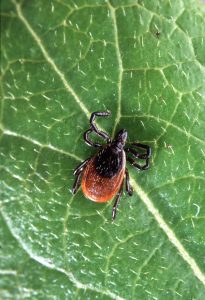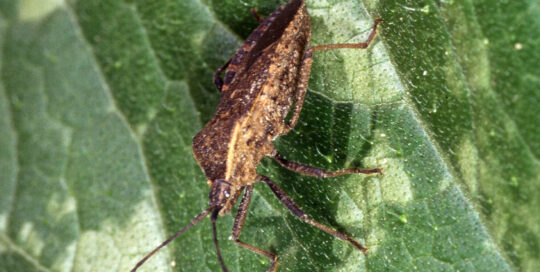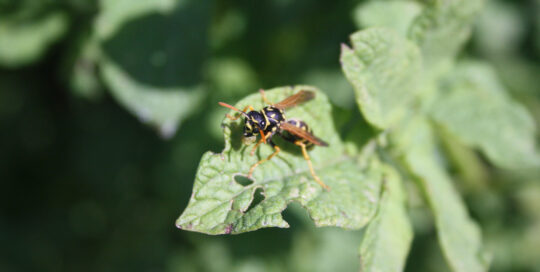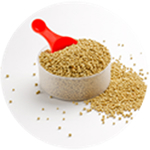Preventing and Removing Ticks
Views: 7346

I’m on the tick roll again. A neighbor’s dog came in with one this spring, just from being in the back yard, which definitely raises my awareness level.
And since we’ve been out hiking a lot more this season, I’m turning into a tick fanatic. It’s been a challenging year around here, and I know it’s even worse in other parts of the country. So here are a few more suggestions on how to avoid picking up ticks, and how to remove them if you find one on you.
Protecting Your Lawn from Ticks
The best thing you can do at home is to keep your lawn trimmed and minimize the places ticks can hide within your landscape.
These bugs hang out in the grass, and they will attach to whatever warm blooded creature comes their way. This means you might also want to trim the lower branches of shrubs, to reduce the places ticks can hide. If your property is adjacent to a wooded area, install a 3-foot-wide barrier of gravel or wood chips along the perimeter. This helps prevent the ticks from jumping from the woods and brush to your yard. And since ticks often hitch a ride on deer, it’s another reason to employ measures to keep the deer out of your yard. That 7-foot-high fence seems like a better idea all the time.
Permethrin-Based Treatment
But what can you do if you’re living or recreating in tick country? What I’m learning with obsessive, paranoid research on ticks is the DEET sprays that are often recommended aren’t as effective as we’d like them to be.
The best option is a permethrin based treatment, whether infused in your clothing or as a spray. Permethrin will actually kill the ticks. This is a good thing. You can buy clothes that retain their insecticidal qualities for up to 70 washings, or there are many products you can use to treat your own, although they don’t last nearly as long.
There are also permethrin sprays to dose your clothing. Typically you spray it and allow it to dry for 2-4 hours before wearing it, not right before you’re going to go for a hike. Since wearing an insecticide goes against my nature, I prefer the spray to use on socks and the lower parts of my pants to limit the exposure. But depending on the level of ticks in your area, you might want full body protection.
How to Check for Ticks
The first thing is to be vigilant. Check for ticks every evening or when you return from an outing. When we come home from a hike, especially if it’s an area known for lots of ticks, it’s standard practice to immediately throw our clothes in the washing machine (not in the laundry basket or on the floor, because I’ve had friends who found ticks their rooms when they did that). Then get into the shower and carefully check for ticks.
If you have thick hair, you might want to have someone go through it closely before hopping in to the shower or bath to make sure none of those little parasites are hiding in the hairline.
How to Remove Ticks
I’ve had to remove a few ticks (thankfully from other people and my dog) through the years, and it’s not pleasant. I never fail to be completely creeped out by the procedure.
First off, forget the match, petroleum jelly, or other “old fashioned” treatments. You want the tick out as quickly as possible. The best way is to take a pair of clean (disinfect with alcohol if possible) tweezers and grasp the tick as close to the skin as possible. Pull upwards with a firm pressure. The ideal scenario is to completely remove the tick without leaving mouthparts in the skin. But, according to the CDC, if some of the mouth parts remain, you should clean the area and allow it to heal. T
My sister-in-law went to the doctor in Macedonia a couple weeks ago to have what looked like the tick’s head removed, and she had one single stitch as a result of it. This morning my brother and nephew were headed to the clinic in Germany because of ticks. It’ll be interesting if the doctor tells them it’s not necessary.
Testing for Disease
You might want to put the tick in some alcohol to take it to the doctor’s office. If you develop a problem, sometimes they will test it to have a better idea of what disease you’re dealing with from the bite. Don’t squish the tick with your hand, because it can spread any diseases it has. Be sure to wash your hands when you’re done.
Ticks are not fun, but it’s part of being outside. Take proactive measures and be vigilant to stay safe throughout the season.
The image is compliments of the USDA.
Meet Amy Grisak
Amy is a freelance author and photographer in Great Falls, MT who specializes in gardening, foods, and sustainable agriculture. She provides information on every kind…
Amy's Recent Posts

Squish Squash Bugs Before They’re a Problem








